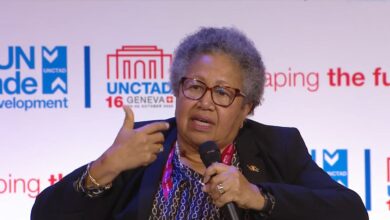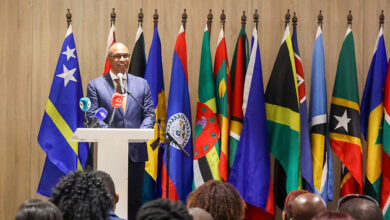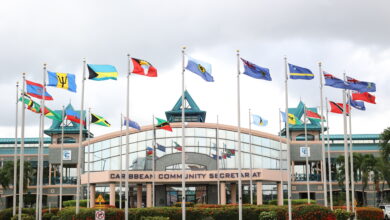|
Technological developments and the policies underpinning the current phase of the globalisation process are leading to a widening of several development gaps between the industrially advanced and poorer countries, in particular small countries. In our presentation at the United Nations Conference on Financing for Development in Monterrey, Mexico in March 2002, we drew attention to five (5) critical gaps between developed and developing countries generally which were widening and held the prospect of a perpetual divide. These were:
As we pointed out then these gaps are particularly significant in the case of the small economies of the CARICOM countries now confronted with the realities of a globalised world and the consequent necessity to transform and reconstruct their economies, historically reliant on a narrow production base, preferential market access for their few major exports and an inordinately high level of imports. With major economic sectors such as bananas , tourism and other services under severe threat, the situation of these countries present a historically unique opportunity for an international partnership in reconstruction and development. In this presentation, we will focus on the human resource development gap, the technology gap and the trade and terms of trade gaps, particularly as they relate to the Member States and the Caribbean Community (CARICOM) as a whole. We will then explore how partnerships and, in particular, cross-sector partnerships, can help reduce the rate of widening of these gaps. We begin, however, with a brief note on the Caribbean Community, including the CARICOM Single Market and Economy (CSME) since this is a complex partnership designed by these countries to help overcome some of the constraints of their small size. The Caribbean Community (CARICOM) The Caribbean Community (CARICOM) is a socio-economic grouping of fourteen (14) (1) of the smallest and most vulnerable – economically, socially and environmentally – countries in the world. The guiding philosophy of the Community is that through processes of cooperation and integration these small States can, among other things:
The economic cooperation process commenced in 1968 with the creation of the Caribbean Free Trade Association (CARIFTA) and advanced to an economic community in 1973. In 1989, the decision was taken to deepen the economic cooperation into a Single Market and Economy. This has now been incorporated into the 2002 Revised Treaty of Chaguaramas Establishing the Caribbean Community including the Caribbean Single Market and Economy which has as its most defining features:
These economic side activities are complemented and supplemented by social sector activities such as cooperation in education and training (tertiary education, secondary education, in particular testing and curriculum development); health (public health, infant and maternal health, infectious diseases control such as HIV/AIDS, drug abuse control and drug testing); culture; information and broadcasting; gender; youth and sports development; community development; labour and labour relations. The Community has thus prioritised, for some time now, many of the issues which fall on the Millennium Development Agenda, specifically poverty reduction, gender equality, improved infant and maternal health, HIV/AIDS reversal and environmental sustainability. The Community has cooperation programmes, many involving international organisations, in all of these areas. Based on the philosophy of open regionalism the Community has also developed economic and social cooperation programmes and arrangements with neighbouring countries in the Caribbean such as those non-Caribbean Community States in the Association of Caribbean States – 20 countries and territories in and bordering the Caribbean Sea . It has also established special trade and economic cooperation agreements with Colombia and Venezuela as well as Free Trade Agreements with the Dominican Republic and Cuba. These are all intended to facilitate more effective and beneficial incorporation of the Caribbean Community countries into the global economy. Now to the gaps which threaten the attainment of this objective. The Human Resource Development Gap The Caribbean Community (without Haiti) has a combined population of approximately six million with 10 of the Member States having a population of less than 300,000. The largest Member State, from a population perspective – Jamaica – has only 2.5 million people. The stark reality is we are a community of very small States. The CARICOM Member States have improved literacy rates over the last fifty (50) years. Literacy rates reported for CARICOM Member States in the Human Development Report 2001, ranged from eighty-two percent (82%) in St Vincent and the Grenadines to ninety-seven percent (97%) in Barbados (See Table I). These literacy levels correlate with the high enrolment rates at the primary level. With the exception of Haiti, CARICOM has achieved net primary level enrolment rates ranging between eighty-four percent (84%) in St Vincent and the Grenadines and one hundred percent (100%) in Barbados (A Caribbean Education Strategy, CGCED, 2000). Table 1: Human Development Index
|
||||||
Press ReleasesSpeeches





